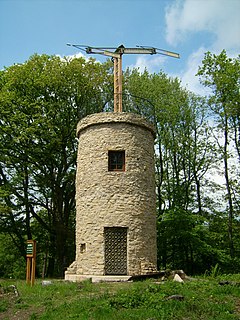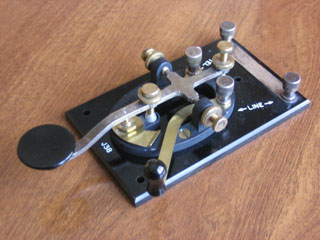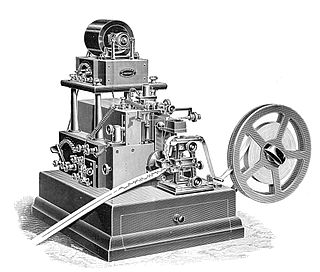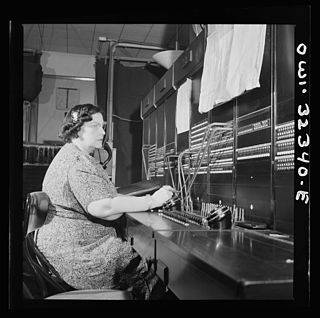In communications and information processing, code is a system of rules to convert information—such as a letter, word, sound, image, or gesture—into another form, sometimes shortened or secret, for communication through a communication channel or storage in a storage medium. An early example is an invention of language, which enabled a person, through speech, to communicate what they thought, saw, heard, or felt to others. But speech limits the range of communication to the distance a voice can carry and limits the audience to those present when the speech is uttered. The invention of writing, which converted spoken language into visual symbols, extended the range of communication across space and time.

Digital data, in information theory and information systems, is information represented as a string of discrete symbols each of which can take on one of only a finite number of values from some alphabet, such as letters or digits. An example is a text document, which consists of a string of alphanumeric characters. The most common form of digital data in modern information systems is binary data, which is represented by a string of binary digits (bits) each of which can have one of two values, either 0 or 1.

Morse code is a method used in telecommunication to encode text characters as standardized sequences of two different signal durations, called dots and dashes, or dits and dahs. Morse code is named after Samuel Morse, one of the inventors of the telegraph.

Telegraphy is the long-distance transmission of messages where the sender uses symbolic codes, known to the recipient, rather than a physical exchange of an object bearing the message. Thus flag semaphore is a method of telegraphy, whereas pigeon post is not. Ancient signalling systems, although sometimes quite extensive and sophisticated as in China, were generally not capable of transmitting arbitrary text messages. Possible messages were fixed and predetermined and such systems are thus not true telegraphs.

Wireless telegraphy or radiotelegraphy is transmission of telegraph signals by radio waves. Before about 1910, the term wireless telegraphy was also used for other experimental technologies for transmitting telegraph signals without wires. In radiotelegraphy, information is transmitted by pulses of radio waves of two different lengths called "dots" and "dashes", which spell out text messages, usually in Morse code. In a manual system, the sending operator taps on a switch called a telegraph key which turns the transmitter on and off, producing the pulses of radio waves. At the receiver the pulses are audible in the receiver's speaker as beeps, which are translated back to text by an operator who knows Morse code.
SOS is a Morse code distress signal, used internationally, that was originally established for maritime use. In formal notation SOS is written with an overscore line, to indicate that the Morse code equivalents for the individual letters of "SOS" are transmitted as an unbroken sequence of three dots / three dashes / three dots, with no spaces between the letters. In International Morse Code three dots form the letter "S" and three dashes make the letter "O", so "S O S" became a common way to remember the order of the dots and dashes.
CQD is one of the first distress signals adopted for radio use. On 7 January 1904 the Marconi International Marine Communication Company issued "Circular 57", which specified that, for the company's installations, beginning 1 February 1904 "the call to be given by ships in distress or in any way requiring assistance shall be 'C Q D' ".

A telegraph key is a specialized electrical switch used by a trained operator to transmit text messages in Morse code in a telegraphy system. Keys are used in all forms of electrical telegraph systems, including landline telegraphy and "wireless" and radio telegraphy. An operator uses the telegraph key to send electrical pulses of two different lengths: short pulses, called dots or dits, and longer pulses, called dashes or dahs. These pulses encode the letters and other characters that spell out the message.

Vibroplex is the brand of side-to-side mechanical, semi-automatic Morse key first manufactured and sold in 1905 by the Vibroplex Company, after its invention and patent by Horace Greeley Martin of New York City in 1904. The original device became known as a "bug", most likely due to the original logo, which showed an "electrified bug". The Vibroplex Company has been in business continuously for 116 years, as of 2021. Amateur radio operator Scott E. Robbins, also known by the call sign W4PA, became the eighth owner of the Vibroplex Company on December 21, 2009. The company is located in Knoxville, Tennessee.

A telegraph sounder is an antique electromechanical device used as a receiver on electrical telegraph lines during the 19th century. It was invented by Alfred Vail after 1850 to replace the previous receiving device, the cumbersome Morse register and was the first practical application of the electromagnet. When a telegraph message comes in it produces an audible "clicking" sound representing the short and long keypresses – "dots" and "dashes" – which are used to represent text characters in Morse code. A telegraph operator would translate the sounds into characters representing the telegraph message.
A telegraph code is one of the character encodings used to transmit information by telegraphy. Morse code is the best-known such code. Telegraphy usually refers to the electrical telegraph, but telegraph systems using the optical telegraph were in use before that. A code consists of a number of code points, each corresponding to a letter of the alphabet, a numeral, or some other character. In codes intended for machines rather than humans, code points for control characters, such as carriage return, are required to control the operation of the mechanism. Each code point is made up of a number of elements arranged in a unique way for that character. There are usually two types of element, but more element types were employed in some codes not intended for machines. For instance, American Morse code had about five elements, rather than the two of International Morse Code.

The syphon or siphon recorder is an obsolete electromechanical device used as a receiver for submarine telegraph cables invented by William Thomson, 1st Baron Kelvin in 1867. It automatically records an incoming telegraph message as a wiggling ink line on a roll of paper tape. Later a trained telegrapher would read the tape, translating the pulses representing the "dots" and "dashes" of the Morse code to characters of the text message.

A telegraphist, telegrapher, or telegraph operator is an operator who uses a telegraph key to send and receive the Morse code in order to communicate by land lines or radio.

American Morse Code — also known as Railroad Morse—is the latter-day name for the original version of the Morse Code developed in the mid-1840s, by Samuel Morse and Alfred Vail for their electric telegraph. The "American" qualifier was added because, after most of the rest of the world adopted "International Morse Code," the companies that continued to use the original Morse Code were mainly located in the United States. American Morse is now nearly extinct—it is most frequently seen in American railroad museums and American Civil War reenactments—and "Morse Code" today virtually always means the International Morse which supplanted American Morse.

Procedural signs or prosigns are shorthand signals used in Morse code radio telegraphy procedure, for the purpose of simplifying and standardizing radio communication protocol. They are separate from Morse code abbreviations, which consist mainly of brevity codes that convey messages to other parties with greater speed and accuracy.

The printing telegraph was invented by Royal Earl House in 1846. House's equipment could transmit around 40 instantly readable words per minute, but was difficult to manufacture in bulk. The printer could copy and print out up to 2,000 words per hour. This invention was first put in operation and exhibited at the Mechanics Institute in New York in 1844.

Women in telegraphy have been evident since the 1840s. The introduction of practical systems of telegraphy in the 1840s led to the creation of a new occupational category, the telegrapher, telegraphist or telegraph operator. Duties of the telegrapher included sending and receiving telegraphic messages, known as telegrams, using a variety of signaling systems, and routing of trains for the railroads. While telegraphy is often viewed as a males-only occupation, women were also employed as telegraph operators from its earliest days. Telegraphy was one of the first communications technology occupations open to women.
In CW Morse code operations, QSK or full break-in operation describes an operating mode in which the transmitting station can detect signals from other stations between the elements or letters of the Morse transmission. This allows other stations to interrupt the transmitting station between individual coding elements, and such allows for a conversational style of communication.

The Wheatstone system was an automated telegraph system that replaced a human operator with machines capable of sending and recording Morse code at a consistent fast rate. The system included a perforator, which prepared punched paper tape called a Wheatstone slip, a transmitter that read the tape and converted the symbols into dots and dashes encoded as mark and space electric currents on the telegraph line, and a receiver at the other end of the telegraph line that printed the Morse symbols. The system was invented by Charles Wheatstone. Enhancements could be made so that it was a duplex system, able to send and receive on the same line simultaneously.














